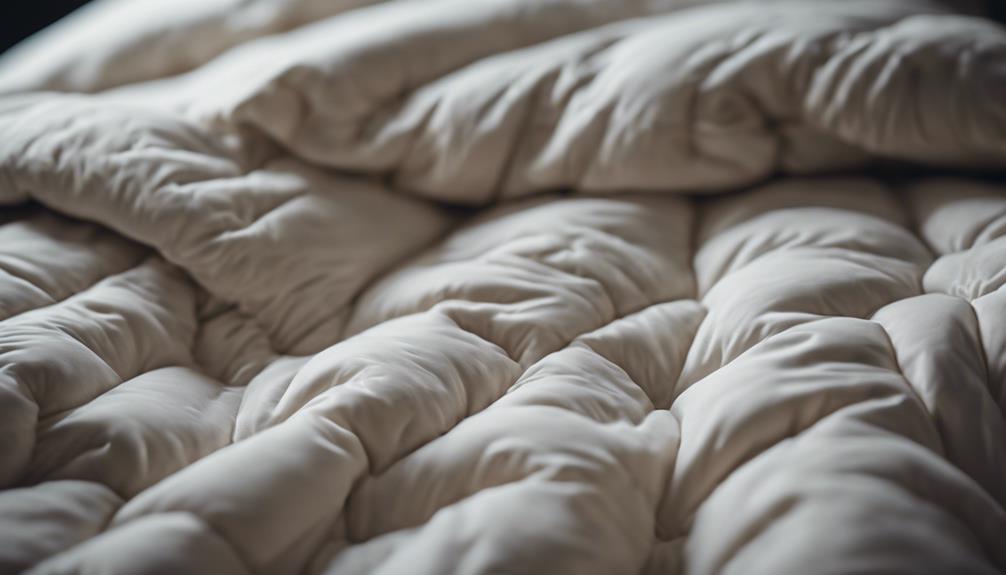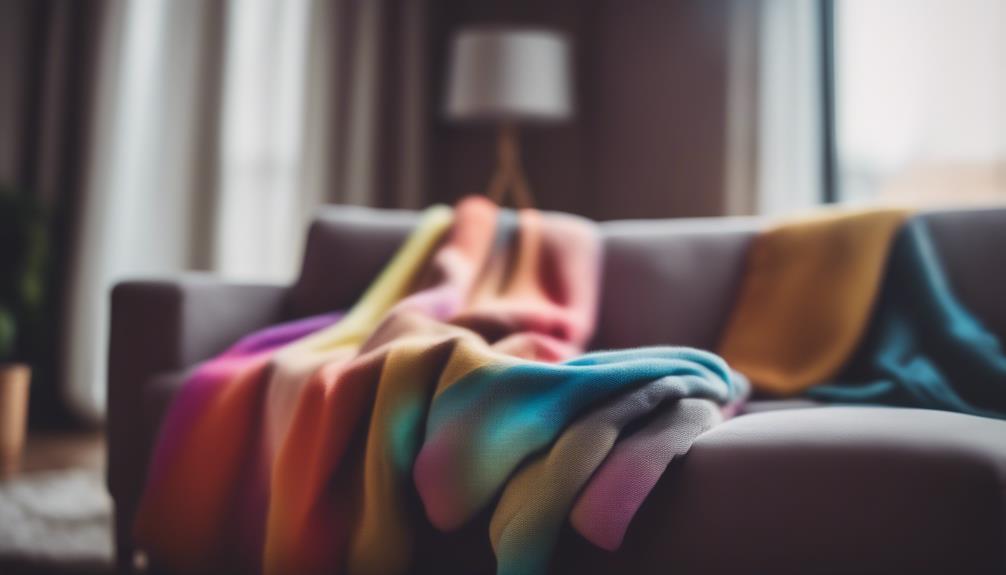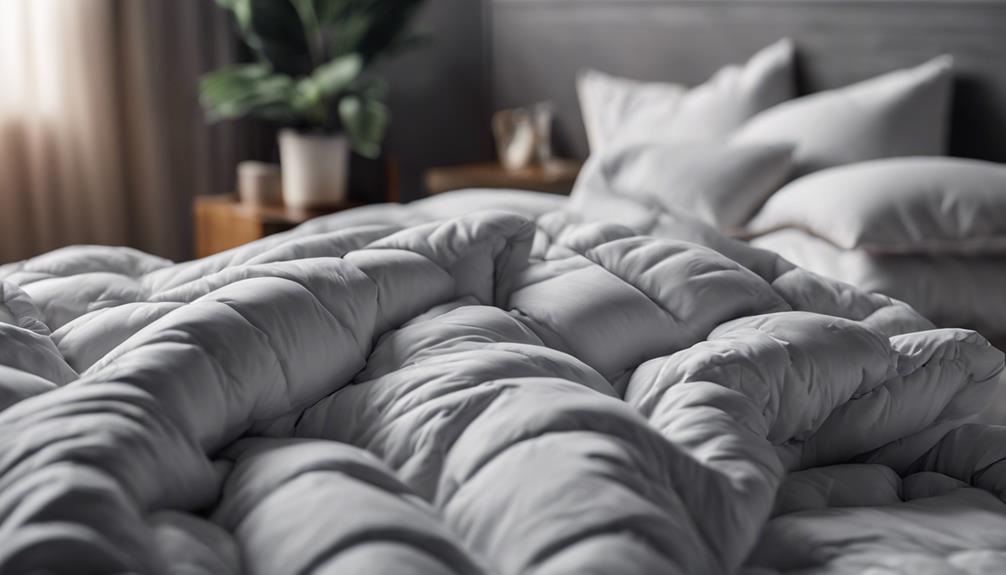If your comforter feels crunchy, it is likely due to lingering detergent residue and improper washing methods. Using too much detergent or fabric softener, overcrowding the dryer, or not rinsing thoroughly can all contribute to this unpleasant texture. To fix this issue, consider using less detergent, adding vinegar to the rinse cycle, or choosing low heat in the dryer. Be sure to gently massage clumped areas and shake the comforter during drying. These simple steps can help bring back softness to your bedding. Taking care of these problems promptly can make a significant improvement in the comfort of your comforter.
Key Takeaways
- Excessive detergent residue causes crunchiness.
- Hard water minerals lead to stiff texture.
- Over-drying strips softness, causing crunchiness.
- Insufficient rinsing leaves soap residue, making it crunchy.
- Using gentle detergent and proper rinsing prevent crunchy comforters.
Common Causes of Crunchy Comforters
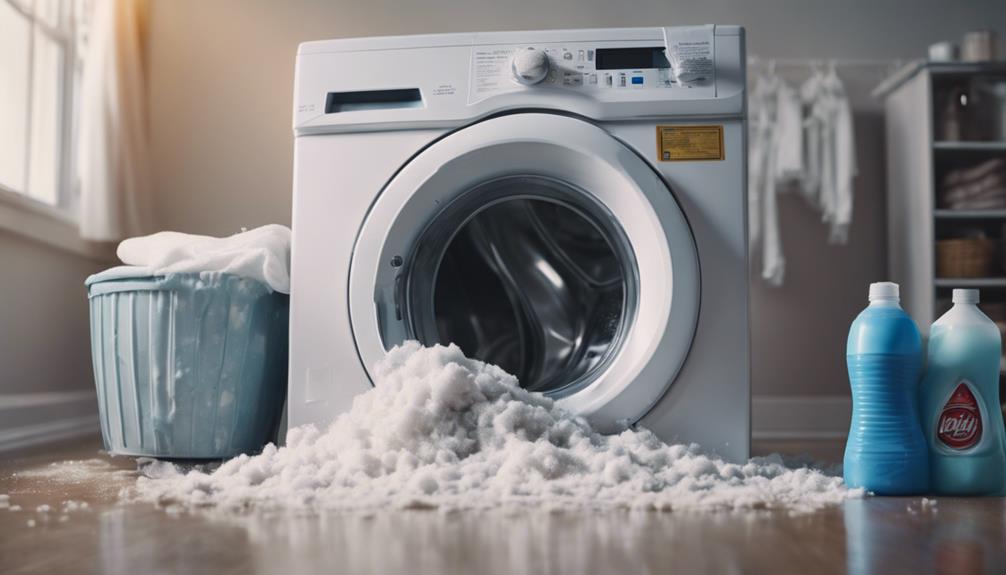
When we explore why our comforter feels crunchy, it often comes down to common culprits like detergent residue, hard water minerals, or over-drying in the dryer. Detergent residue, if not rinsed properly, can accumulate on the fabric, leaving it stiff and unpleasant to touch. Hard water minerals, present in water with high mineral content, can also contribute to the crunchy texture by leaving deposits on the comforter. Additionally, over-drying in the dryer can strip the fabric of its natural softness, making it feel stiff and crunchy.
To avoid these issues, it's important to use a gentle detergent, ensure thorough rinsing during the washing cycle, and avoid over-drying the comforter. By using these proper washing and drying techniques, you can help prevent detergent residue buildup, minimize the impact of hard water minerals, and maintain the softness of your comforter for longer periods.
Next, we'll examine the impact of washing and drying techniques on the texture of your comforter.
Impact of Washing and Drying Techniques
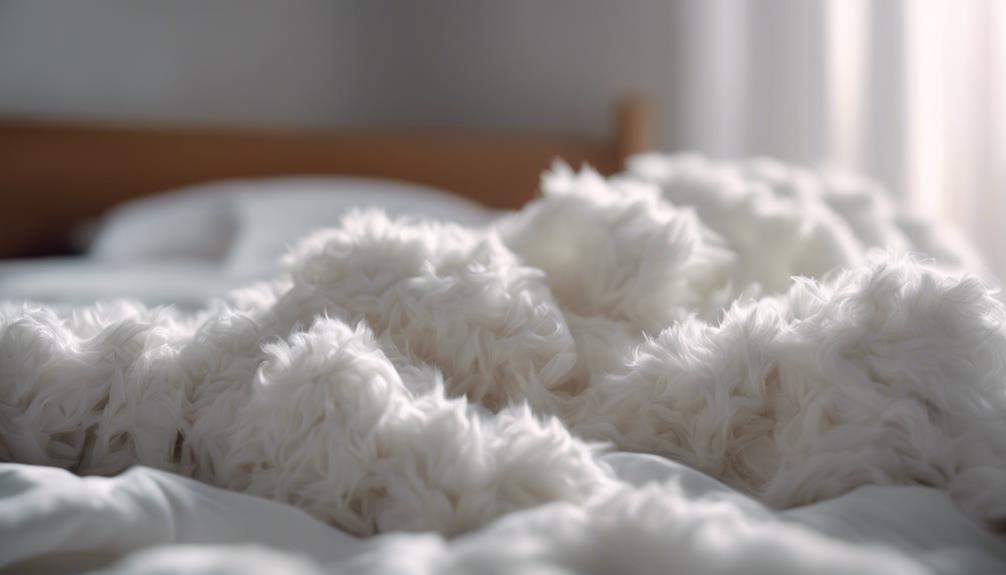
To maintain the softness of your comforter and avoid a crunchy texture, it's important to pay attention to the impact of washing and drying techniques.
Using too much detergent or fabric softener can cause residue buildup, leading to a crunchy feel. Overcrowding the dryer can prevent proper fluffing, resulting in a crunchy texture. Insufficient rinsing during the washing cycle may leave soap residue on the comforter, contributing to its crunchiness. High heat settings in the dryer can damage the comforter's fibers, making it stiff and crunchy.
It's essential to follow the fabric care instructions on the comforter label, as using the wrong washing or drying settings can affect its texture and lead to crunchiness. By adopting proper washing techniques, selecting appropriate drying settings, and adhering to fabric care instructions, you can help maintain the softness of your comforter and avoid the unwanted crunchiness that may result from improper care.
Black Dye Bleeding Onto Tan Side

After washing a Nicole Miller comforter with Woolite for all colors, black dye bled onto the tan side, causing staining issues.
To address the problem of black dye bleeding onto the tan side of the comforter, consider the following solutions:
- Use Color-Safe Bleach: Consider using color-safe bleach to remove black stains from the tan side of the comforter. Follow the product instructions carefully to avoid damaging the fabric.
- Follow Care Instructions: To prevent future dye bleeding mishaps, always follow the care instructions on the comforter label. Different fabrics may require specific washing techniques.
- Spot Clean Promptly: In case of accidents, spot clean the comforter promptly to prevent stains from setting in. This can help maintain the overall appearance and longevity of the comforter.
Clumped Edges and Hardened Areas
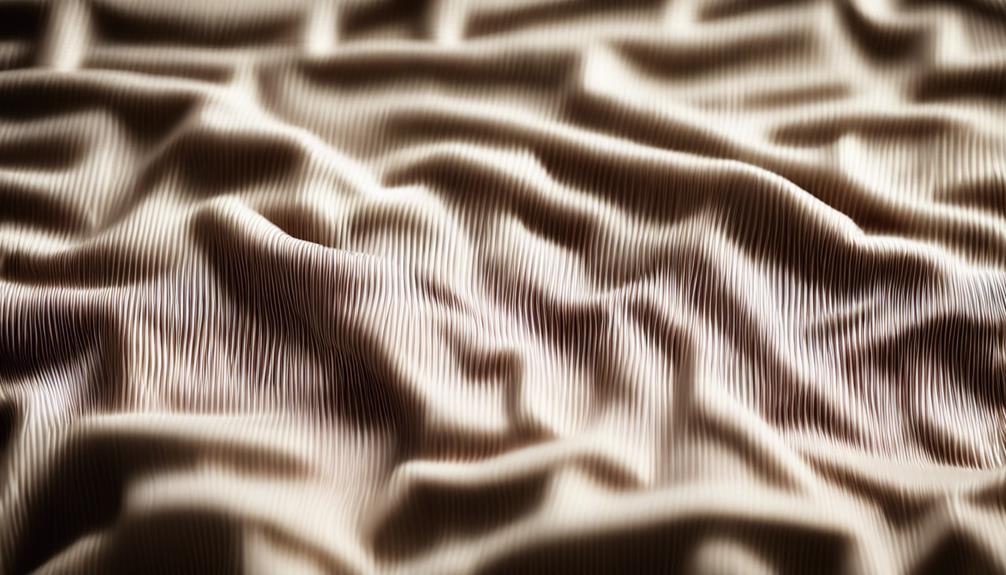
When clumped edges and hardened areas are present on a comforter, it can be due to improper drying methods. These issues often stem from exposing the comforter to high heat settings or neglecting to shake it out during drying.
Clumped Down Filling
Clumped down filling in a comforter can create stiff and uneven sections, resulting in crunchy edges and hardened areas post-washing and drying. When the feathers stick together, they form clumps that lead to hardened spots in the comforter. Moisture during drying exacerbates this, causing the down feathers to stick together and create uneven, stiff areas.
To address this issue, try gently massaging and separating the affected parts to redistribute the down filling evenly. Ensuring proper care during washing and drying, as well as periodic fluffing, can prevent clumping of down filling and help maintain the comforter's softness.
- Clumped down filling leads to hardened areas.
- Moisture during drying worsens the clumping.
- Regular care and fluffing prevent clumping.
Stiff Fabric Corners
Stiff corners and hardened areas on a comforter may be caused by improper drying methods, resulting in a crunchy texture that affects the comfort of the bedding. When the comforter fill is melted due to exposure to high heat settings, clumpy areas form, making the fabric feel stiff and unpleasant. To address this issue, gently massage and separate the clumped edges to break up the hardened spots. Air drying the comforter after this process can help restore its softness and prevent further damage. Remember, avoid drying bulky items together with the comforter to maintain its quality. Below is a table to summarize the key points:
| Issue | Solution |
|---|---|
| Clumped Edges | Gently massage and separate hardened areas |
| Stiff Fabric Corners | Air dry after fixing clumpy spots |
| High Heat Exposure | Avoid drying bulky items with the comforter |
Hardened Washing Residue
To address the issue of crunchy comforter texture caused by hardened washing residue, focus on using proper washing techniques to prevent clumped edges and stiff areas. When dealing with hardened washing residue, consider the following:
- Avoid Excess Detergent: Guarantee proper measurement of detergent to prevent leftover residue on the comforter.
- Check Heat Settings: Be cautious of high heat in the dryer, as it can contribute to hardening washing residue on the comforter.
- Proper Rinsing: Avoid overloading the washing machine to allow for thorough rinsing and prevent residue buildup.
Remedies for Crunchy Comforters
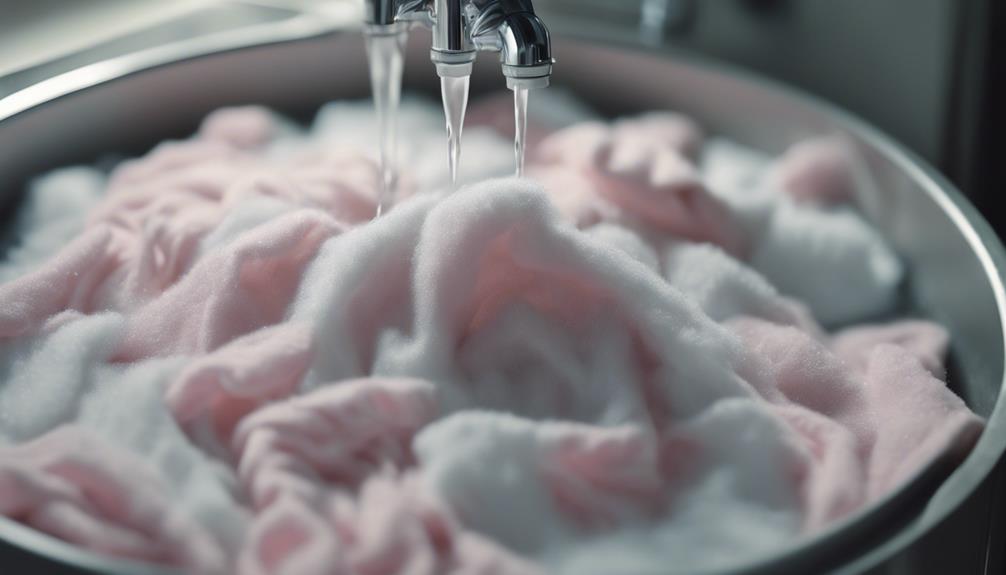
What're effective remedies for crunchy comforters?
Crunchy comforters can be a result of detergent residue, hard water, or improper drying techniques. To tackle this issue, consider using less detergent when washing your comforter to prevent residue buildup. Adding vinegar to the rinse cycle can help remove any lingering detergent and soften the fabric. Utilizing dryer balls during the drying process can also aid in fluffing up the comforter and reducing crunchiness.
When drying your comforter, avoid overloading the dryer and opt for low heat settings to prevent damage to the fibers. Shake the comforter periodically during the drying cycle to prevent clumping and guarantee even drying. Additionally, regularly fluffing and airing out the comforter can help maintain its softness. For better fluffiness, try adding tennis balls to the dryer to help break up any clumps and restore the comforter's loftiness.
Choosing natural fiber fill comforters, such as cotton or down, can also contribute to a softer and less crunchy feel.
Gently Massaging and Separating Clumps
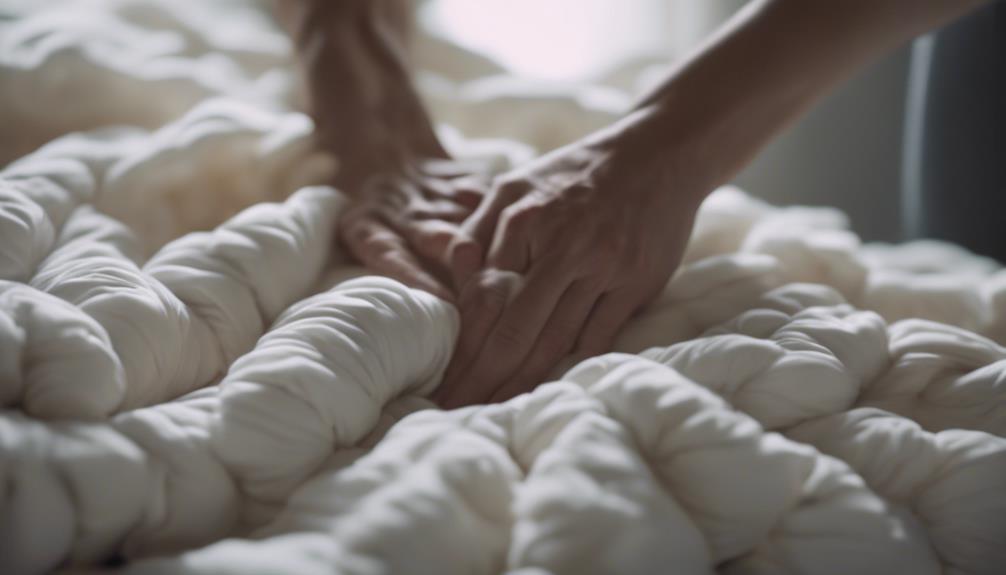
When dealing with a crunchy comforter, gently massaging and separating clumps is crucial to restoring its softness. By breaking apart any hardened areas with a light touch, you can loosen the fibers and maintain the comforter's fill.
Carefully separating clumps helps avoid damage and guarantees an even distribution of filling for a less crunchy texture.
Clump Separation Techniques
Gently massaging and separating clumps in your comforter can help restore its fluffiness and guarantee uniform distribution of filling. When dealing with clumps, it's crucial to handle them delicately to avoid damaging the comforter.
Here are some techniques to effectively separate clumps:
- Use your fingers or a soft-bristled brush to gently work through the clumps.
- Apply light pressure while separating the clumps to redistribute the filling evenly.
- Take your time during the process to guarantee a gradual and effective separation without causing harm to the comforter.
Massaging for Fluffiness
Regularly massaging your comforter can help promote fluffiness by gently separating clumps and redistributing the filling evenly. When your comforter starts feeling crunchy, it's a sign that the filling has clumped together.
Using your hands, delicately massage the affected areas to break up any hardened sections. Apply gentle pressure while massaging to make sure the filling is spread out uniformly. This process can help restore the softness of your comforter and eliminate the unwanted crunchy texture.
Remember to fluff and massage your comforter regularly, especially after washing and drying, to maintain its plushness. By incorporating this simple massaging technique into your routine, you can keep your comforter feeling soft and fluffy for a longer period.
Avoiding Damage During Process
To preserve the comforter's quality, delicately massage and separate clumps to prevent damage during the process. When handling the comforter, gentle care is important to avoid causing any harm.
Here's how to guarantee damage prevention and maintain the comforter's integrity:
- Handle with Care: Avoid aggressive movements that may worsen the clumping.
- Evenly Redistribute: Gently work on the clumps to redistribute the filling evenly throughout the comforter.
- Prevent Hardening: Carefully separate clumped edges to prevent them from hardening further during the drying process.
Professional Dry Cleaning Consideration
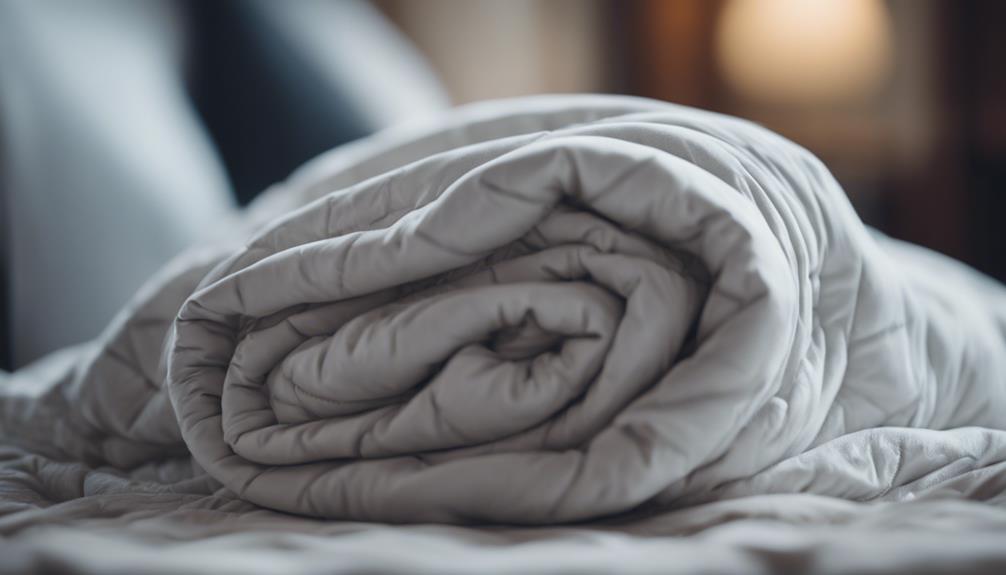
When considering the care of delicate wool fabrics, professional dry cleaning is highly recommended to guarantee excellent maintenance and longevity.
Dry cleaning services specialize in handling fragile materials like wool items with the expertise and equipment needed to ensure proper care. These professionals use gentle cleaning methods that effectively remove tough stains and odors from wool fabrics without causing damage.
Opting for professional dry cleaning for your wool items not only helps maintain their quality but also extends their lifespan by preventing potential harm that could occur during improper cleaning processes.
By entrusting your delicate wool garments to dry cleaners, you can rest assured that they'll be handled with the utmost care and attention, ensuring they remain in superb condition for years to come.
Frequently Asked Questions
How to Fix a Crunchy Comforter?
To fix a crunchy comforter, we recommend using wool dryer balls or adding a tennis ball or clean sneakers to the dryer to break up clumps and restore softness. Avoid using excessive detergent or fabric softener, as residue can make the comforter crunchy.
Air-drying the comforter outside can help eliminate stiffness. Consider using dryer sheets or bedding-specific fabric softener for a soft and fluffy finish.
How to Soften a Crunchy Comforter?
To guarantee a crunchy comforter, try using white vinegar in the rinse cycle to remove residue. Add a tennis ball or dryer balls to fluff and prevent clumping. Opt for air drying or low heat to avoid crunchiness. Don't overload the washer or dryer.
Consider using a fabric softener made for bedding to maintain softness. These steps will make sure your comforter stays cozy and comfortable.
Why Is My Down Comforter Crinkly?
When down comforters have a crinkly texture, it's often due to the outer fabric rather than the filling. The crinkly sound can be a personal preference, with some enjoying it and others finding it bothersome.
Different materials used in the comforter can influence the noise level. Users may look for comforters with specific noise levels based on their preferences. Knowing the materials, like cotton, can help select a comforter with the desired noise level for maximum comfort.
Why Is My Blanket Crunchy After Drying?
After drying, if your blanket feels crunchy, it could be due to leftover detergent residue or improper drying methods. Using excessive detergent, not rinsing thoroughly, or using high heat can lead to this texture.
To avoid crunchiness, opt for a gentle cycle, mild detergent, and make sure proper rinsing. Adding dryer balls, shaking out the blanket during drying, and air-drying partially can help maintain a soft texture.
Does Crunchy Comforter Material Cause Itching?
Yes, some people may find that the material in down comforters causing itching. Allergies to down feathers or the dust mites that can accumulate in them may cause itching for some individuals. It’s important to consider hypoallergenic alternatives if you are sensitive to down comforters.
Conclusion
To sum up, if you find your comforter to be crunchy, it may be due to washing and drying techniques, black dye bleeding, or clumped edges.
To remedy this, gently massage and separate clumps or consider professional dry cleaning.
By taking these steps, you can guarantee your comforter remains soft and cozy for a good night's sleep.
